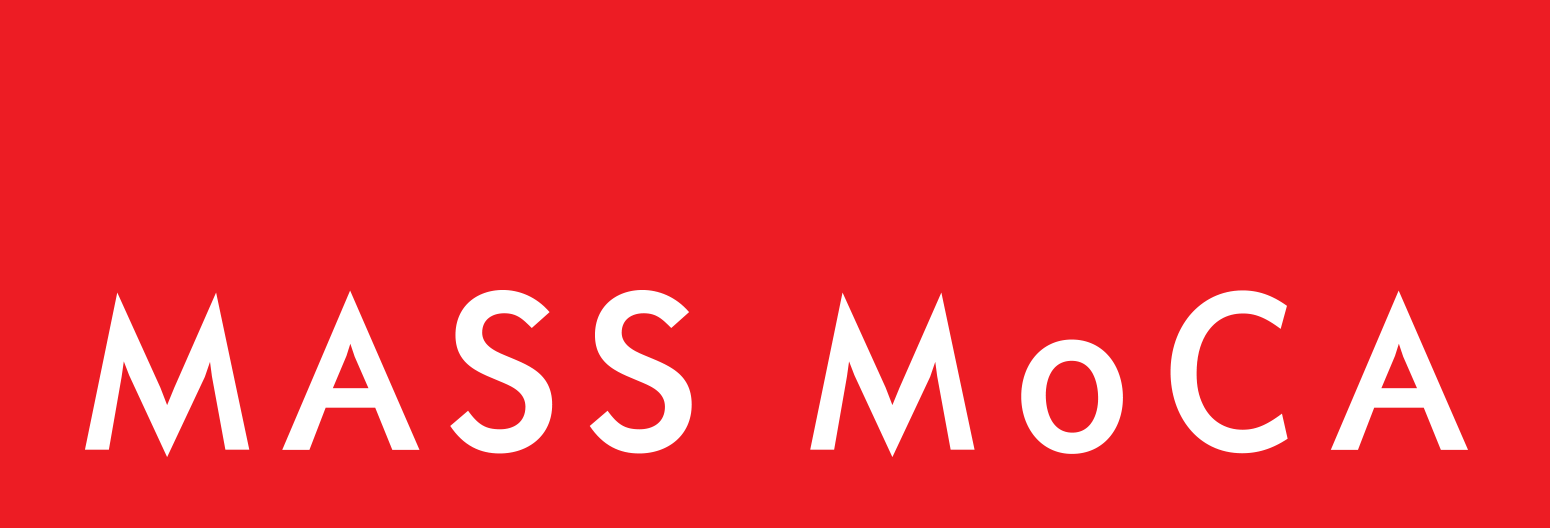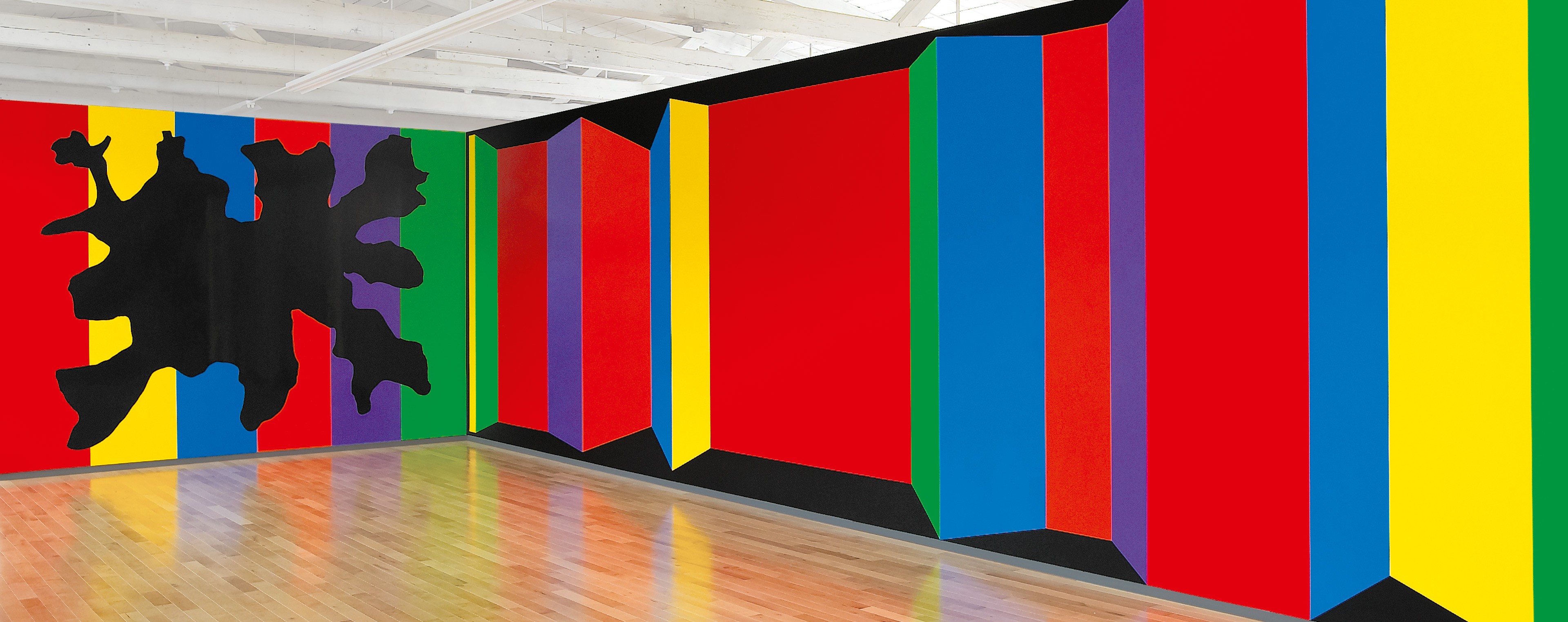Sol LeWitt
- Sol LeWitt
Color bands and black blob. The wall is divided vertically into six equal bands; red; yellow; blue; orange; purple; green. In the center is a black glossy blob.
May 1999
Acrylic paint
Courtesy of the Estate of Sol LeWitt (Designated for Yale University Art Gallery)
First Installation
Institute of Contemporary Art, Philadelphia
First Drawn By
Elyce Abrams, David Dempewolf, Joy Feasley, Meghan Ganser, Michael Gibbons, John Gibbons, Chris Hensel, John Hogan, Beth Leatherman, Tristin Lowe, Stephen Malmed, Sarah McEneaney, Matthew Pruden, Scott Rigby, Paul Swenbeck, Clint Takeda
MASS MoCA Building 7
Third Floor
For an exhibit at the ICA Philadelphia entitled Sol LeWitt: New Work (Black and Colors), LeWitt designed four new wall drawings, each featuring stripes of all the primary and secondary colors and irregular black forms. LeWitt referred to these forms as blobs, a term that recalls science fiction or comic books. Many art historians and critics also link the blob form to Henri Matisse’s cut-outs. Although these organically shaped forms appear to be uncharacteristic for LeWitt, they epitomize his belief that to be truly objective one cannot rule anything out. All possibilities include all possibilities without pre-judgement or post-judgement.[1]
The blob wall drawings also exemplify another change in LeWitt’s wall drawings: the introduction of secondary colors (orange, violet, and green) into LeWitt’s color palette, which had been previously limited to gray, yellow, red, and blue. The artists expansion of his color palette occurred when he began to use paint rather than ink washes. In the latter medium he had worked only in the four basic colors used for printing, layering them to create a variety of hues. His adoption of the three secondary colors was based on the hues created by the secondary colors that the ink layering produced.
The contrast between the vertical colored stripes and the amorphous blob in each of the wall drawings is intensified by LeWitt’s use of matte and glossy varnishes. In Wall Drawing 901, for instance, the colors are flat while the blob is glossy.
[1] Quoted from Andrea Miller-Keller, Excerpts from a Correspondence, 1981-1983, in Susanna Singer, et al., Sol LeWitt Wall Drawings 1968-1984 (Amsterdam: Stedelijk Museum, 1984), p.19.Backstory
The ideas explored by LeWitt in his wall drawings, works on paper, and three-dimensional structures often cross over and overlap. For example, the fiberglass Splotch structures that LeWitt created in the early 2000s grew out of the blob wall drawings. To create the structures, LeWitt drew a two-dimensional topography on top of a blob form, and then had a fabricator translate this design into a three-dimensional sculpture. The resulting sculptures appear as if the blob has been laid on the ground and is growing up from the earth in peaks.


